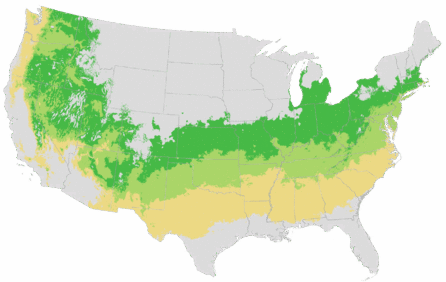You're growing in this Zip Code:
Change LocationIrish Yew
Taxus baccata 'Stricta' ('Fastigiata')
Retailers Near You
No Retailers found within 50 miles of your zipcode
Be Inspired: How to Use this Plant
| Bloom Time | Conifer; prized for foliage. |
|---|---|
| Deciduous/Evergreen | Evergreen |
| Special Features | Easy Care, Ornamental Berries |
| Problems/Solutions | Rabbit Resistant |
| Growth Rate | Slow |
| Landscape Use | Hedge, Privacy Screen, Suitable for Topiary |
| Design Ideas | The symmetrical, distinctively columnar shape of this stately shrub delivers a bold statement in formal groupings. Highly effective as a foundation or accent specimen, providing an exceptional vertical effect in the landscape. Excellent evergreen support for foreground plantings. Plant in mass to create a handsome tall hedge or privacy screen. |
| Foliage Color | Dark Green |
| Companion Plants | Lilac (Syringa); Viburnum (Viburnum); Potentilla (Potentilla); Weigela (Weigela); Spirea (Spiraea); Periwinkle (Vinca) |
| Care Instructions | Easily adapts to most well-drained soils. Water deeply, regularly during the first growing season to establish an extensive root system; reduce frequency, once established. Fertilize before new growth begins in spring. For a neat appearance, prune annually to shape in early spring. |
| Lore | All species of the genus Taxus are poisonous if ingested. One American species is the source of the cancer drug, Taxol. In England yew trees were restricted to church yards where they were not subject to livestock grazing, which caused many animal deaths in the past. Interestingly, deer may graze on them, unaffected. Birds are also attracted to the fruit, which they eat without consequence, as the flesh is not toxic to most, and the seed passes through intact. Male flowers can appear occasionally on Irish Yew, resulting in setting of brightly colored drupes on this generally female plant. |
| Bloom Time | Conifer; prized for foliage. |
|---|---|
| Deciduous/Evergreen | Evergreen |
| Special Features | Easy Care, Ornamental Berries |
| Problems/Solutions | Rabbit Resistant |
| Growth Rate | Slow |
| Landscape Use | Hedge, Privacy Screen, Suitable for Topiary |
|---|---|
| Design Ideas | The symmetrical, distinctively columnar shape of this stately shrub delivers a bold statement in formal groupings. Highly effective as a foundation or accent specimen, providing an exceptional vertical effect in the landscape. Excellent evergreen support for foreground plantings. Plant in mass to create a handsome tall hedge or privacy screen. |
| Foliage Color | Dark Green |
| Companion Plants | Lilac (Syringa); Viburnum (Viburnum); Potentilla (Potentilla); Weigela (Weigela); Spirea (Spiraea); Periwinkle (Vinca) |
| Care Instructions | Easily adapts to most well-drained soils. Water deeply, regularly during the first growing season to establish an extensive root system; reduce frequency, once established. Fertilize before new growth begins in spring. For a neat appearance, prune annually to shape in early spring. |
|---|
| Lore | All species of the genus Taxus are poisonous if ingested. One American species is the source of the cancer drug, Taxol. In England yew trees were restricted to church yards where they were not subject to livestock grazing, which caused many animal deaths in the past. Interestingly, deer may graze on them, unaffected. Birds are also attracted to the fruit, which they eat without consequence, as the flesh is not toxic to most, and the seed passes through intact. Male flowers can appear occasionally on Irish Yew, resulting in setting of brightly colored drupes on this generally female plant. |
|---|
Retailers Near You
No Retailers found within 50 miles of your zipcode
Retailers Near You
No Retailers found within 50 miles of your zipcode
Buy Online
We cannot currently ship this product to your zip code.
About Us
We have been pioneers and craftsmen in the art of growing plants for nearly
100 years. Since our founding in Southern California by Harry E. Rosedale, Sr.
in 1926, we have been absolutely dedicated and obsessed with quality.
We have been pioneers and craftsmen in the art of growing plants for nearly 100 years. Since our founding in Southern California by Harry E. Rosedale, Sr. in 1926, we have been absolutely dedicated and obsessed with quality.




